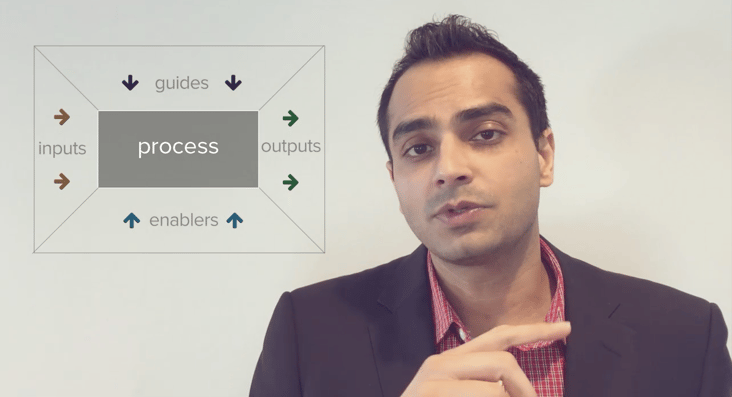There are three aspects of scope and the scope of modeling. Firstly, I'll discuss what scope is, why we need scope and why it's important. Finally we’ll examine how to derive scope.
What is Scope?
Scope refers to the left and right limit of your process modeling effort.
Why is scope important?
Scope is important because it helps you identify how much effort you and your team require to do any kind of process modeling. This is essential, especially if you're planning ahead and identifying what your start and finish point is. From an organizational standpoint, it could be a value chain. From a departmental viewpoint, it may be something a little bit smaller. But, defining the scope is an important part of your modeling excellence journey.
Remember, it's always enhanced by an understanding of the purpose of why you're modeling.
How to define scope
Now there are many techniques out there available to you to define scope, including SIPOC, IGOE. SIPOC meaning the supplier, inputs, processes, outputs, and customers. The technique I'm about to share with you is called the process scope diagram. And the process scope diagram has just four things to remember. Inputs, outputs, enablers, and guides.
- Inputs refer to the things that trigger off a process. It could be a certain time of the month. Or it could be a particular report or, or a form.
- Outputs are the outcomes of that process or the results of doing work in that process.
- Guides talk about procedures and policy documents that guide the process.
- Enablers, which refer to your technology, your people, and so on.
 See the above image - a box in the middle called the process with your inputs coming in, your outputs leaving, your enablers supporting the process, enabling the process, and your guides guiding the process. With these elements you have a nice framework of how your processes look. This helps you scope the process.
See the above image - a box in the middle called the process with your inputs coming in, your outputs leaving, your enablers supporting the process, enabling the process, and your guides guiding the process. With these elements you have a nice framework of how your processes look. This helps you scope the process.
That's why the scope of modeling is really essential and it's crucial that you get it right before you start any kind of modeling.




